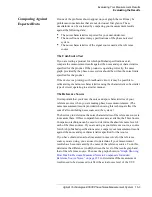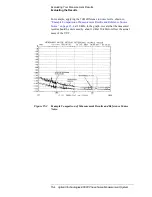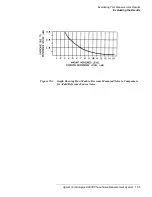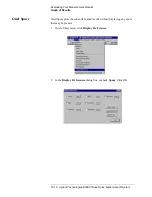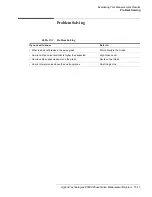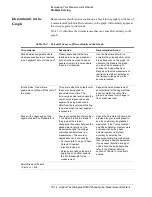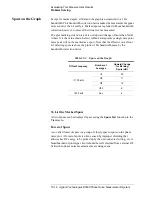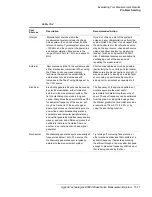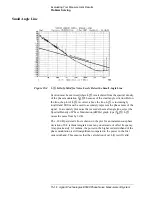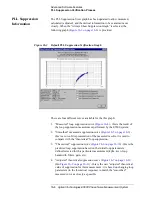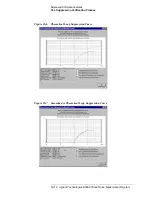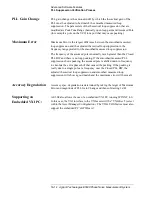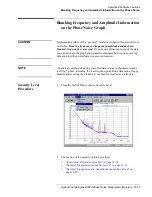
15-16
Agilent Technologies E5500 Phase Noise Measurement System
Evaluating Your Measurement Results
Problem Solving
Spurs on the Graph
Except for marked spurs, all data on the graph is normalized to a 1 Hz
bandwidth. This bandwidth correction factor makes the measurement appear
more sensitive than it really is. Marked spurs are plotted without bandwidth
correction however, to present their true level as measured.
The spur marking criterion is a detected upward change of more than X dB
(where X is the value shown below) within 4 data points (a single data point
noise peak will not be marked as a spur). Note that the effective noise floor
for detecting spurs is above the plotted 1 Hz bandwidth noise by the
bandwidth correction factor.
To List the Marked Spurs
A list of spurs can be displayed by accessing the Spurs List function in the
View menu.
Forest of Spurs
A so called forest of spurs is a group of closely spaced spurs on the phase
noise plot. A forest of spurs is often caused by improper shielding that
allows stray RF energy to be picked up by the unit-under-test wiring, etc. A
breadboarded or prototype circuit should be well shielded from external RF
fields when phase noise measurements are being made.
Table 15-3
Spurs on the Graph
Offset Frequency
Number of
Averages
Upward Change
for Marking
Spurs (dB)
<
100 kHz
<
4
30
≥
4
17
≥
8
12
≥
30
6
>
100 kHz
Any
4


